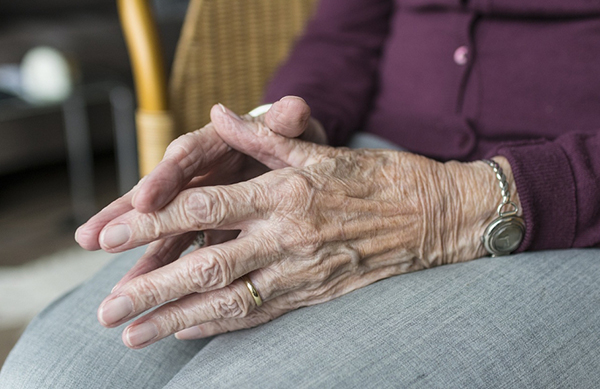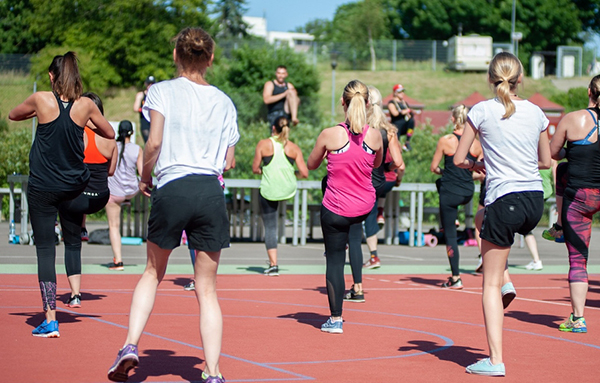In addition to wrinkles in the skin and gray hair, people's aging is also reflected in "getting shorter."
After a certain age, people tend to lose height, and research has shown that people actually start to get shorter from the age of 30.
Life Times combines research and interviews with experts to summarize the causes of "getting short" and teach you the science of prevention.
Experts interviewed:
Beijing Jishuitan Hospital spinal surgery deputy chief physician Jiang Jile
People start getting shorter at the age of 30
With age, the height of middle-aged and elderly people will continue to shrink. A study published by the US National Institute on Aging warns that weight loss actually begins at age 30 and increases over time.
The researchers followed 2,084 men and women between the ages of 17 and 94 for 35 years, and the results showed that between the ages of 30 and 70, the average length of the men became about 3 cm and that of the women was about 5 cm. By the age of 80, men are about 5 centimeters shorter and women about 8 centimeters shorter.
Jiang Jile, deputy chief physician of spinal surgery at Beijing Jishuitan Hospital, explained that people's height does start to get shorter from about 30 years old, and there are several reasons behind this.
Postural change
When you are young, you may hold your head up high, but as you grow older, you will involuntarily hunchback, resulting in a decrease in height.
osteoporosis
After years of standing and being tired, bones will slowly become "flat". If the human spine has 7 cervical vertebrae, 12 thoracic vertebrae, and 5 lumbar vertebrae, if each bone is reduced by 1 mm, the overall height will drop by 2 to 3 cm.
sarcopenia
Muscle reduction will cause bone loss, osteoporosis, resulting in further changes in posture, but also make people "shorter."
For women, height loss may be more pronounced because they have less muscle mass and more subcutaneous fat than men, Jiang said.
In addition, women experience hormonal changes before and after pregnancy, which can lead to more muscle loss and fatigue. After menopause, women's estrogen levels are also significantly reduced, and they are more likely to have osteoporosis.
For men, osteoporosis may not appear until their 70s or 80s, which is why men and women don't get shorter at the same time and to the same extent.
How to stop getting shorter
Keep good posture
From a young age, it is necessary to develop good posture habits, walk as far as possible and raise your chest, do not hunchback, which helps to overcome the old stoop.
Eat a balanced diet
Eat more calcium-rich foods, such as soy products, dairy products, seafood, green leafy vegetables, lean meats, etc. Limit salt intake to no more than 5 grams per day, and supplement the right amount of protein.
Daily calcium intake should be appropriately increased to about 1000 mg:
Drink 300 grams of milk or yogurt, you can get about 350 milligrams of calcium;
Eat 1 kilogram of fresh dark green vegetables, you can take about 500 mg of calcium;
1~3 two soy products contain about 150 mg of calcium;
A handful of nuts a day can also provide about 50 mg of calcium.
Stick to sports
Proper physical exercise can reduce the loss of bone calcium, and you can actively exercise from the age of 20 to 30. Long-term physical exercise can reduce the occurrence of senile diseases and delay the premature failure of the spine.
For the elderly, strenuous competitive sports, such as basketball and football, are not suitable. In order to improve the balance of the body, strengthen the strength of the muscles, especially the core muscle group, and increase the flexibility of the ligament, the elderly can do more of the following aerobic exercises:
Brisk walk or jog. Can be done in the mall, park. When walking, pay attention to the head held high, and at the same time shake hands back and forth, so that the shoulder and elbow muscles can also be effectively exercised.
Aerobics or square dancing. Moderate intensity aerobics or square dancing can effectively control weight, reduce body fat content, increase lung capacity, and comprehensively improve physical endurance.
Tai Chi. Boxing should be concentrated, calm and calm, maintain attention, help delay muscle loss, maintain and improve joint flexibility.
It should be noted that the elderly exercise according to their own circumstances, so as not to cause sports injuries or other health risks.
Get more sun
Vitamin D is an important nutrient to promote calcium absorption and utilization, and vitamin D in the human body is mainly synthesized by the skin under light.
It is recommended to spend more time outdoors in the sun, avoid the hottest period in summer, the hands, face, and arms can be basked for an average of 15 to 30 minutes a day, and in winter, they should be basked for more than 30 minutes.
Be careful about getting shorter than 5 centimeters
In fact, height is a natural aging process, generally 3 centimeters down, we do not have to worry too much.
For the elderly who have become shorter, in addition to calcium and vitamin D supplements, it is recommended to carry out 1 to 2 hours of outdoor activities every day, on the one hand, vitamin D can be supplemented by proper exposure to the sun, on the other hand, more activity can also make muscles and bones stronger.
The height of the elderly becomes shorter, the most should be wary of is osteoporosis.
Early symptoms are not obvious, and many patients do not know until the bones are weak enough to have bone pain or fracture. Although there is no immediate danger to life, there is a possibility of disability, especially once the vertebrae, hip, femur and tibia fracture, it will bring great inconvenience to life.
Therefore, the elderly have obvious back pain, joint pain or shorter than 5 cm, should be paid attention to, timely to the regular hospital for bone density detection and related examinations. Bring about
Post time: Sep-19-2024


